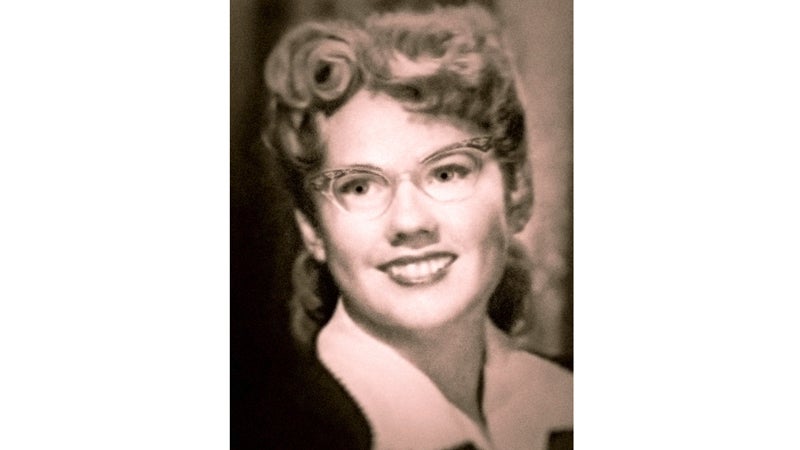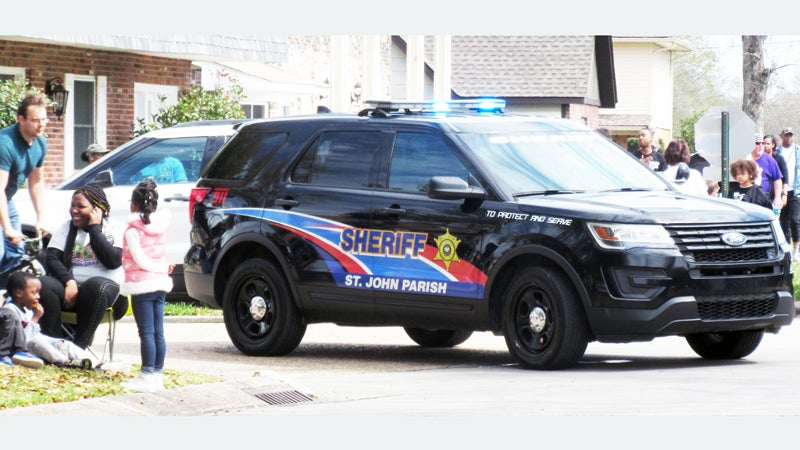What really happened to Audrey Moate? (Part 3)
Published 12:01 am Wednesday, August 19, 2020

- Audrey Moate of Baton Rouge disappeared in St. John the Baptist Parish in November 1956. The case has never been solved.
|
Getting your Trinity Audio player ready...
|
The following is the third installment in a five-part series of a true crime story that happened in St. John the Baptist Parish in 1956. The first part appeared on Aug. 5 and the second Aug. 12. It is the continuing story the murder of Thomas Hotard and the disappearance of Audrey Moate. Moate left behind a trail of footprints and a decades-long cold case that brought St. John Parish national attention when it aired in a 1989 episode of Unsolved Mysteries. L’OBSERVATEUR will run part of the series every Wednesday.
An interview with its author HL Arledge can be found on lobservateur.com and in the Aug. 1 e-edition. The author’s contact information is listed at the bottom of the story.
BY HL ARLEDGE
bayoujustice@hammondstar.com
By the mid-1960s, the Travelers Aid Society of New York had established a reputation for saving lives. The program protected stranded travelers, especially women and children, from those who might use and abuse them or force them into prostitution.
On October 12, 1964, John Spain celebrated his 10th year working the Travelers Aid desk at John F. Kennedy International, having started long before the assassination gave the airport the new name.
And John recognized runaway teenagers when he saw them.
A young girl, a skinny little blonde, approached him that afternoon, with damp eyes and a red nose, visibly shaking and staring at the ceiling.
On her face, John saw scant remnants of makeup, smudged lipstick and specks of glue that once held false eyelashes in place.
He poured her a cup of hot chocolate and offered her a chair.
Ordinarily, the girls that approached John’s desk looked haggard, but this 17-year-old girl also looked emaciated.
She coughed over her cup and said she came from New Orleans.
“Well, now,” John said, “why don’t we just place a call to your mother?”
“My mother is dead,” the girl answered. “Murdered and dumped in a swamp, they say. Either that, or she just ran off and left me.”
“Oh—uh, well…” John mumbled. “Then, I suppose your father…”
She shook her head. “He doesn’t want me either.”
“Oh, I’m sure you’re wrong about that,” John told her. “Just give me his number.”
Moments later, John listened as Deckey Lee Moate, daughter of Audrey Moate, called home to New Orleans.
“Please let me come home,” Deckey said. “Daddy, I’ll be a good girl. I’ll go to Louisiana State. I’ll get married. Whatever you want. Just let me come home.”
John learned later that George Moate divorced Deckey’s mother two years before Audrey Moate disappeared, but on the call that afternoon, he could hear George’s new wife in the background, telling George what to say.
George told his daughter to go live with Audrey’s mother in Oregon.
“How can I?” Deckey replied, “I have no money, not even for food. I’m sick, living on pep pills. I weigh 85 pounds.” She started to whimper, and John watched tears roll down her cheek.
George Moate told Deckey she would be a bad influence on her little brother and her stepsisters and stepbrothers. Hours later, George wired the exact fare for a one-way bus ticket to Coos County, Oregon, and John drove Deckey to the station, giving her five dollars for something to eat on the road to Grandma Minnie’s house.
Out west, Deckey enrolled at Oregon State University, majoring in psychology, and worked after class, doing office tasks for Dr. Robert Meredith, head of the school’s chemical engineering department.
In time, she saved her money and caught a bus back to Louisiana.
At age 19, measuring 34-23-34, and wearing a low-cut blouse and a high-cut skirt, Deckey sauntered into the New Orleans Playboy Club and applied for work.
“I loved being a bunny,” she said later. “Those cocktail outfits made me feel like a glamorous woman, instead of a scared mixed-up little kid.”
Before Deckey found her confidence and bunny ears, she worked in multiple clubs on Bourbon Street and attempted suicide three times.
In 1966, Deckey returned to New York, where she worked as a magazine columnist and took John Spain to lunch.
Years later, she changed the spelling of her name to Dekki and moved to Hollywood, where Dekki Lee Moate lived a successful life and career as an actress, writer and movie producer.
In 1989, back in New Orleans, working on a script about her missing mother, Dekki met a television producer interested in featuring her mother’s case on an episode of a new documentary show entitled Unsolved Mysteries.
Audrey Moate vanished from the west shore of Lake Pontchartrain in 1956, leaving behind the gunshot-riddled corpse of Thomas Hotard, a married friend police identified as her lover.
Before her death in 2019, Dekki left samples of her DNA with the St. John the Baptist Parish Sheriff’s Office, in case they ever found her mother’s body.
In 1966, Journalist Tom McMorrow of the New York Daily News asked a 19-year-old Dekki about growing up and about her suicide attempts.
“Can you imagine what it’s like to be a little girl and have your mother become the victim of such a horrendous crime?” she asked. “I became some kind of freak to other kids. A girl said to me, ‘I wish my mother was dead, so I could be famous.’
“And the things people said about my mother when they didn’t even know her. My stepmother would say to me, ‘I know why you want out of the house. You want to go peddle your body, like your mother.’
“Let me tell you what my mother was like,” she said. “She treated my little brother and me with love and respect—not like idiots as some parents do. She never spanked us either. When we did something wrong, she’d sit down and talk to us quietly, helping us understand why it was wrong.”
In 2003, Dekki told me she spent her youth roaming from “beatnik joint to beatnik joint” and from “town to town” and “barroom to barroom.”
I asked her why.
“I wasn’t sure then,” she said, “But, you know, they never found my mother’s body. Looking back, I think, deep down, I went to those places hoping to find my mom.”
“Bayou Justice” is a weekly true crime column featuring exciting or notable crime-related stories often focusing on cold case files in South Louisiana; stories based on interviews with key players, among them: police investigators, lawyers, victims, and their families. If you have information regarding this case or another unsolved crime, contact Crime Stoppers or your local police agency, or email bayoujustice@hammondstar.com.





